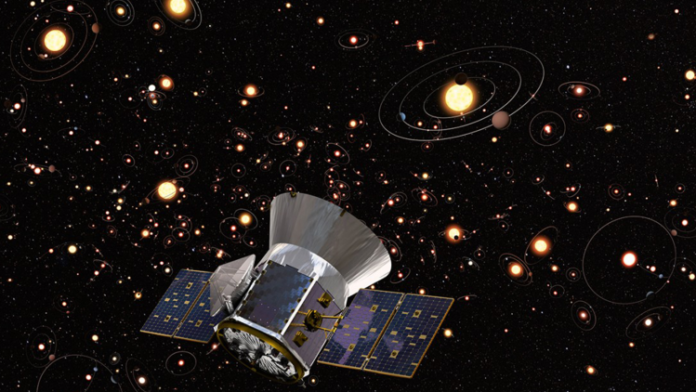How accurate are the exoplanet radius measurements obtained by NASA’s Transiting Exoplanet Survey Satellite (TESS)? This is what a recent study accepted to The Astrophysical Journal hopes to address as a team of researchers investigated how hundreds of exoplanetary radii measured by TESS during its mission might be incorrect and the data could be underestimating the radii measurements. This study has the potential to help astronomers develop more efficient methods more estimating exoplanetary characteristics, which could influence whether or not they are Earth-sized.
For the study, the researchers used a series of computer algorithms to re-estimate hundreds of exoplanetary radii from past studies. The goal was to attempt to compensate for the low angular resolution of TESS when it measures an exoplanet using the transit method, which is conducted when an exoplanet passes in front of its host star. In the end, the researchers discovered that previous TESS estimations potentially underestimated the radius of its exoplanets by approximately 6.1 percent, resulting in overestimating exoplanetary density by approximately 20 percent.
“Our study reveals that unresolved blending in TESS photometry may be responsible for a systematic ∼ 6% radius underestimation for 228 planets, skewing their inferred densities and compositions,” the researchers note. “This bias likely extends to many other TESS planets beyond our sample, suggesting a broader need for correction. Correction of these radius measurements would shift these planets toward lower densities, challenging previous claims of Earth-like planets, while enhancing the viability of some targets for JWST atmospheric studies.”
Regarding how the new radii measurements planetary densities, the researchers note how exoplanets orbiting the stars TOI-1078, TOI-1235, and TOI-4524 were all previously estimated to be Earth-like exoplanets. However, these new radii measurements provide new densities, resulting in these exoplanets being re-classified as terrestrial (rocky) exoplanets with atmospheres and not possessing as much iron as previously hypothesized. Additionally, this could indicate a smaller number of Earth-like exoplanets identified by TESS previously hypothesized.
Launched in April 2018, the goal of TESS was to observe the closest stars to Earth for exoplanets, whereas its predecessor, NASA’s Kepler Space Telescope, strictly focused on one region of the sky when hunting for exoplanets. As of June 2025, TESS has identified 7,655 exoplanet candidates while confirming 633 of those candidates as actual exoplanets. For context, Kepler observed a total of 530,506 stars during its nine-year mission from 2009 and 2017 while confirming 2,778 exoplanets as of June 2023.
Key discoveries made by TESS include TOI-700 d, which was its first discovered Earth-sized exoplanet orbiting within its star’s habitable zone and located approximately 100 light-years from Earth. What makes this system intriguing is its architecture, as it has two additional exoplanets, an Earth-sized (TOI-700 b) and a super-Earth (TOI-700 c), with the TOI-700 c orbiting between the other two. Astronomers are still debating the origins of this unique exoplanetary system architecture, with one possible scenario being TOI-700 c came to its current orbit through planetary migration.
This study demonstrates that science is not exact, especially regarding the study of worlds beyond our solar system. Science involves never-ending adaptations and corrections to ensure data accuracy and efficiency while maintaining a level of humility that scientists don’t always have all the answers. While this study noted that the number of Earth-like worlds previously identified by TESS could be less than previously estimated, this could also open doors for developing new methods in identifying and confirming exoplanets, potentially resulting in finding more Earth-like exoplanets some other way.
What new discoveries and/or corrections about TESS exoplanets will researchers make in the coming years and decades? Only time will tell, and this is why we science!
As always, keep doing science & keep looking up!


